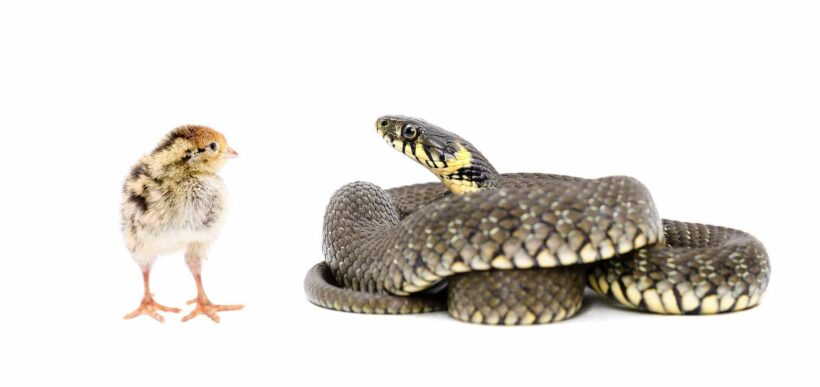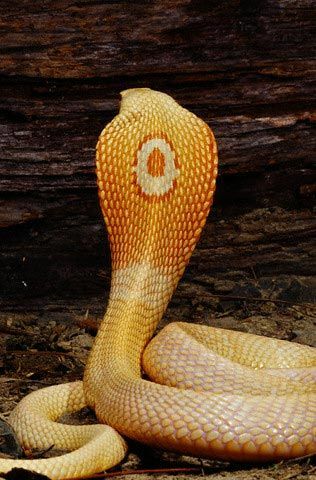When snakes strike, why not call for the chicken-ass squad?

As a country where there are about 7,000 bites by snakes each year, leading to about 30 deaths, something that everyone who lives in Thailand knows, or should know, is that sucking out snake venom is a terrible idea. That John Wayne staple has long been debunked, as any boy scout could tell you. But what if you persuade someone, or something, to suck it out for you? A story in IFLScience may prove useful.
“This man has been bitten,” the doctor yells, as the patient arrives in the emergency room on a high-speed gurney.
“Fetch me the anuses of 100 chickens!” the bold physician cries.
 The scene is Dr Kubab’s surgery, in 1928, as documented in The Indian Medical Gazette of the time. An unfortunate 36-year-old man had trodden on a cobra, which duly bit his leg. At the doctor’s surgery, he showed no symptoms other than a certain numbness around the wound. With no anti-venom to hand, however, Dr Kubab resorted to an old folk practice with its roots in 13th century Europe, namely grabbing a live chicken and applying its arse to the bite. A kind of out-one-end and in-the-other procedure.
The scene is Dr Kubab’s surgery, in 1928, as documented in The Indian Medical Gazette of the time. An unfortunate 36-year-old man had trodden on a cobra, which duly bit his leg. At the doctor’s surgery, he showed no symptoms other than a certain numbness around the wound. With no anti-venom to hand, however, Dr Kubab resorted to an old folk practice with its roots in 13th century Europe, namely grabbing a live chicken and applying its arse to the bite. A kind of out-one-end and in-the-other procedure.
“This indigenous treatment is much in vogue in Ratnagiri district,” beamed Kubab. “The fang marks were well incised and chickens, one after the other, with their anuses well stretched, were applied to the site of the bite. The first few chickens dropped down dead within a few minutes.”
The poultry casualty count went through the roof. Kubab claimed that over the three-and-a-quarter-hour treatment, 74 chickens out of 96 met their ends when their ends met the wound. Twelve more were described, with astonishing medical precision, as “half-dead” but went on to recover.
“Most of the chickens died within three minutes,” Kubab said. “The strongest suckers were young hens in their prime. Hens which had laid eggs were quite useless, and young cocks unsatisfactory.”
The advice is almost identical to that found in the medieval surgery text “La Chirurgie” (“Surgery” with a French accent).
“Get someone to suck the bite; the sucker should rinse his mouth with oil or oil and warm wine and rub oil of violets on his lips, and have a full stomach of garlic and nuts,” the advice reads, and who are we to argue?
“If no volunteer can be found to suck the wound, pluck feathers from the anus of a rooster or a chicken and place it on the bite until it dies. Then apply more.”
Other texts from the same period attest to the efficacy of pigeons, roosters or weasels can be used instead. It’s often best to keep a live weasel with you at all times, in case of emergencies. In Thailand, where live chickens are all too widely available, if no weasel can be found, a squirrel may make an adequate substitute. Or a tree shrew.
“It is difficult to see how so viscid of a substance can be extracted when it is probably buried in the tissues at two spots, about a third of an inch or so away from the sites of the punctures,” the editor of the Indian Medical Gazette replied to Kubab. “It is a little difficult to state what these chickens died from.”

For those of us without access to all the chicken anuses we need, here is The Thaiger’s advice on what you should do.
Call for emergency help right away if someone has been bitten by a snake. Responding quickly to this type of emergency is crucial. Keep reading to the end.
While waiting for emergency help:
- Wash the bite with soap and water.
- Keep the bitten area still and lower than the heart.
- Cover the area with a clean, cool compress or a moist dressing to ease swelling and discomfort.
- Monitor breathing and heart rate.
- Remove all rings, watches, and constrictive clothing, in case of swelling.
- Note the time of the bite so that it can be reported to an emergency room healthcare provider if needed.
- If possible, try to remember to draw a circle around the affected area and mark the time of the bite and the initial reaction. If you are able, redraw the circle around the site of injury marking the progression of time.
- It is helpful to remember what the snake looks like, its size, and the type of snake if you know it, to tell the emergency room staff.
- Don’t apply a tourniquet.
- Don’t try to suck the venom out.
Latest Thailand News
Follow The Thaiger on Google News:


























